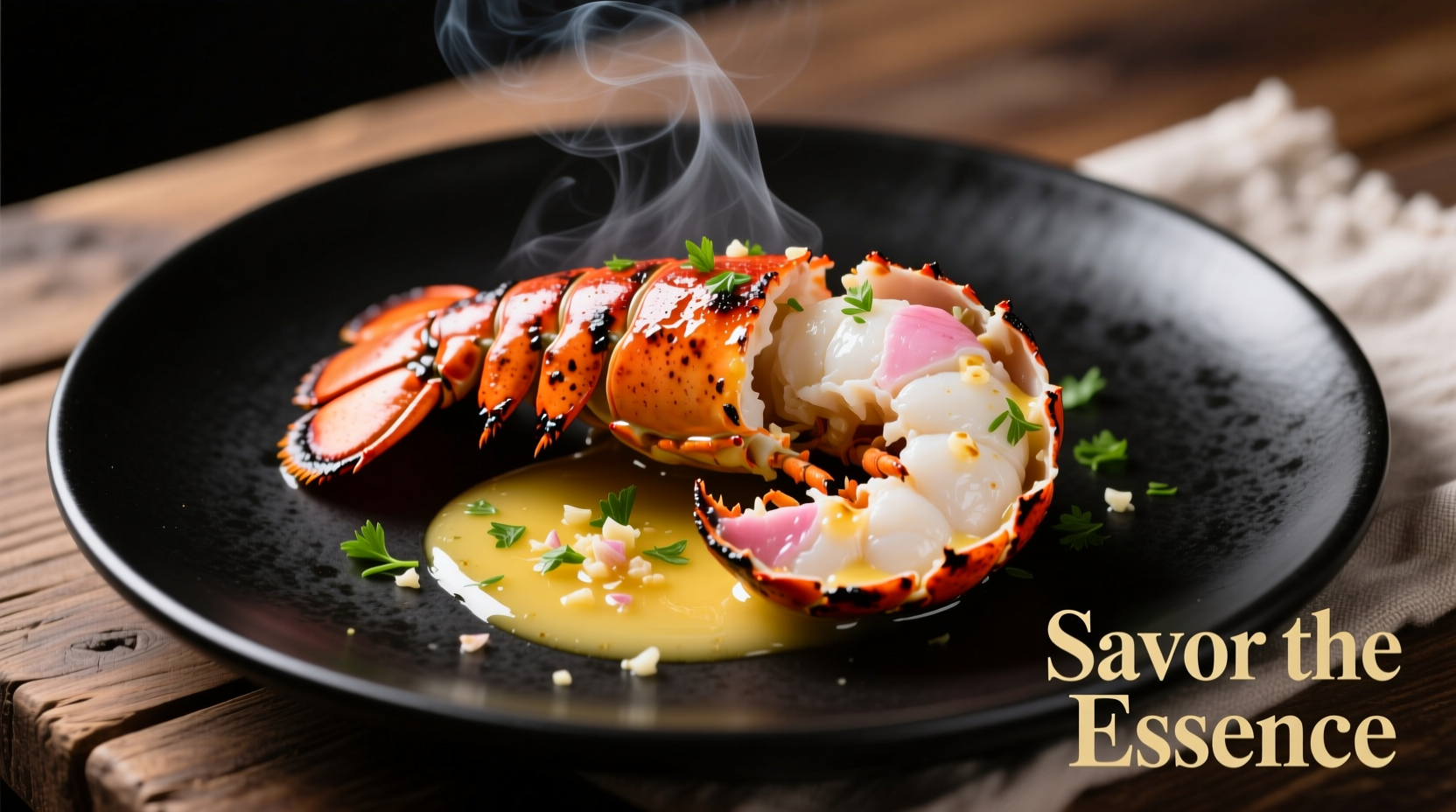If you've ever wondered how do you cook lobster tail without ending up with rubbery, overcooked results, you're not alone. Many home cooks struggle with this elegant seafood delicacy, but with the right techniques, you can achieve restaurant-quality lobster tails that rival any fine dining establishment. This guide covers everything from selecting quality lobster to avoiding the most common cooking mistakes.
Essential Preparation Steps Before Cooking
Before you start cooking lobster tail, proper preparation makes all the difference. Frozen lobster tails are widely available year-round, but they require careful thawing. The USDA Food Safety and Inspection Service recommends thawing frozen seafood in the refrigerator for 24 hours, never at room temperature, to prevent bacterial growth (source).
When preparing lobster tails:
- Use kitchen shears to cut through the top shell lengthwise, stopping at the tail fin
- Gently lift the meat through the opening while keeping it attached at both ends
- Rinse under cold water to remove any debris
- Pat dry thoroughly with paper towels (critical for proper searing)
- Remove the black vein running through the center if present
| Cooking Method | Best For | Time Required | Difficulty Level |
|---|---|---|---|
| Broiling/Baking | Beginners, indoor cooking | 12-18 minutes | Easy |
| Grilling | Summer entertaining | 8-12 minutes | Moderate |
| Steaming | Traditional preparation | 10-15 minutes | Moderate |
Broiling Method: Most Reliable for Perfect Results
Broiling lobster tail delivers consistent results with minimal effort, making it ideal for first-time cooks. This method creates beautiful caramelization while keeping the meat tender.
Step-by-step instructions:
- Preheat broiler on high with rack positioned 6 inches from heat source
- Place prepared lobster tails on baking sheet, meat side up
- Brush generously with melted butter mixture (2 tbsp butter, 1 minced garlic clove, lemon juice)
- Broil 5-7 minutes until meat is opaque and reaches 140°F internal temperature
- Rotate pan halfway through for even cooking
- Sprinkle with fresh herbs and serve immediately
Professional chefs at the Culinary Institute of America recommend this method for home cooks because it's less prone to overcooking than boiling (source). Watch for the visual cue: properly cooked lobster turns from translucent to opaque white with firm but tender texture.

Grilling Technique: Summer Entertaining Favorite
Grilled lobster tail offers that distinctive smoky flavor that elevates this seafood classic. The key is managing heat properly to avoid drying out the delicate meat.
Professional grilling tips:
- Preheat grill to medium-high (375-400°F)
- Place tails meat-side down first for 3-4 minutes to create grill marks
- Flip to shell-side down and continue cooking 4-6 minutes
- Brush with compound butter during last 2 minutes
- Use instant-read thermometer to check 140°F internal temperature
Food science explains why this timing works: lobster protein begins to denature at 130°F and becomes tough above 145°F. The shell-side down positioning during the final cooking phase protects the delicate meat from direct heat while allowing the shell to conduct heat evenly.
Steaming Method: Traditional Approach Preserving Natural Flavor
Steaming preserves the delicate natural flavor of lobster tails without adding fat. This method requires precise timing but yields exceptionally tender results.
Perfect steaming technique:
- Bring 1 inch of salted water to a rolling boil in a large pot with steamer basket
- Place lobster tails in basket, meat-side up
- Cover tightly and steam 10-14 minutes (1 minute per ounce)
- Check for doneness: meat should be opaque and flake easily
- Remove immediately to prevent residual cooking
Historically, steaming was the original method used by coastal communities before modern cooking equipment. Unlike boiling, steaming prevents waterlogging while maintaining the lobster's natural sweetness. This method works best with smaller tails (4-6 oz) as larger tails may cook unevenly.
Avoiding Common Lobster Cooking Mistakes
Even experienced cooks make these critical errors when preparing lobster tails:
- Overcooking - The #1 mistake causing rubbery texture (remove from heat at 140°F, not 145°F)
- Skipping the score - Not cutting the shell leads to uneven cooking and curling
- Using wet meat - Pat dry thoroughly before cooking for proper searing
- Adding too much salt - Lobster contains natural salt; minimal additional seasoning needed
- Letting it rest too long - Serve immediately as lobster continues cooking off-heat
Serving Suggestions and Flavor Pairings
Perfectly cooked lobster tail shines with simple preparations. Try these professional pairing recommendations:
- Classic garlic butter - 4 tbsp melted butter, 2 minced garlic cloves, 1 tbsp lemon juice, pinch of paprika
- Citrus herb sauce - Orange zest, chopped chives, and tarragon in light cream sauce
- Side dishes - Asparagus, garlic mashed potatoes, or fresh corn salad
- Wine pairing - Crisp Chardonnay or dry Rosé complements the delicate flavor
Remember that less is more with lobster. Avoid overpowering seasonings that mask the natural sweetness of the meat. A squeeze of fresh lemon just before serving enhances without dominating.











 浙公网安备
33010002000092号
浙公网安备
33010002000092号 浙B2-20120091-4
浙B2-20120091-4